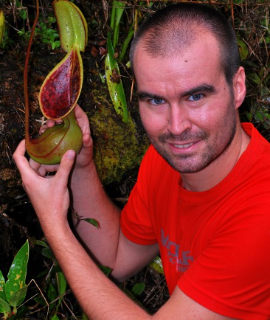Title : Stimuli from prey induce expression of digestive enzymes in the carnivorous plant of the genus Nepenthes
Abstract:
Carnivorous plants of the genus Nepenthes have evolved passive pitcher traps for prey capture. In this study we investigated the ability of chemical signals from prey (chitin, protein, ammonium) to induce transcription and synthesis of digestive enzymes in carnivorous plant Nepenthes x Mixta. We used real-time PCR and specific antibodies generated against aspartic proteases nepenthesins, type III and type IV chitinases to investigate the induction of digestive enzyme synthesis in response to different chemical stimuli from prey. Transcription of nepenthesins was strongly induced by ammonium, protein and live prey; chitin induced transcription only very slightly. This is in accordance with amount of released enzyme and proteolytic activity in digestive fluid. Although, transcription of type III chitinase was induced by all investigated stimuli, significant accumulation of enzyme in digestive fluid was found mainly after protein and live prey addition. Protein and live prey were also the best inducers for accumulation of type IV chitinase in digestive fluid. Although ammonium strongly induced transcription of all investigated genes probably through membrane depolarization, strong acidification of digestive fluid affected stability and abundance of both chitinases in digestive fluid. The study showed that the proteins are universal inductors of enzyme activities in carnivorous pitcher plant best mimicking the presence of insect prey. This is not surprising, because proteins are much valuable source of nitrogen than chitin. Extensive vesicular activity was observed in prey-activated glands using transmission electron microscopy.



